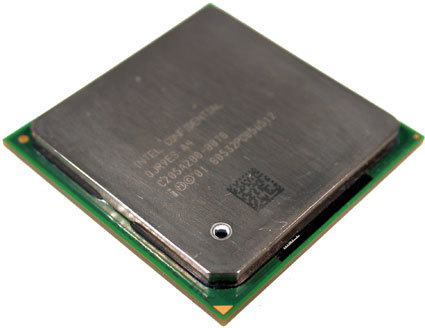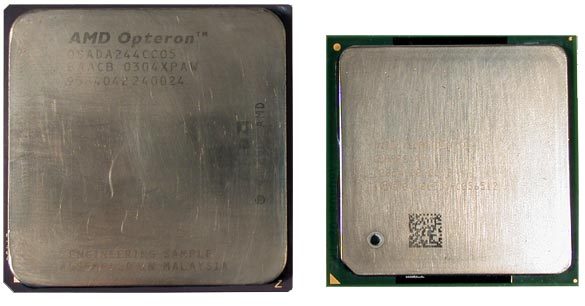Bidding Adieu: P4 3.2 vs. Athlon XP 3200+
The Top Models Together: P4 3.2 GHz And Athlon XP 3200+, Continued
The last stage of development: the Intel Pentium 4 with 3.2 GHz. Its successor, the Pentium 5 with 3.4 GHz, will be launched at the end of 2003.
After AMD recently introduced its top-of-the-line model in the form of the Athlon XP 3200+ (read our review High-Flying: AMD Athlon XP 3200+ Squares Off Against Intel P4 3 GHz ), a big duel was in order - in our previous test, the P4 with 3 GHz was able to put its green-and-white arch enemy in its place. Now, the clock speed has been increased by 7%, while the rest of the conditions have remained the same. Strictly speaking, there's now a clock difference of 1000 MHz between the two top models for the first time, since the Athlon XP runs with 2200 MHz, but this doesn't say anything about its performance abilities. Here, we'd like to note that, according to internal sources at AMD, there will not be an Athlon XP 3400+ based on the Barton core. Instead, the Athlon 64 will be available with this particular model numbering.
This is what the duel will look like in Q4 2003: the Athlon 64 on the left and the Pentium 5 on the right (symbolic representation only, since the Opteron, Athlon 64 and Pentium 5 have the same package).
Another aspect to consider is the sales price of the two rivals. In the past, the P4 has been known to be significantly more expensive for the end user than a comparable Athlon XP. This scenario has now changed, because although there's still a price difference between the two top models (the Athlon XP 3200+ goes for approximately $529, the P4 3.2 GHz for about $700), and even though the slower clocked Intel models are more expensive than AMD's, the price difference is only valid if you compare the P4 clock speeds with the XP model numbering. Otherwise, ever since the introduction of FSB800 and Hyper-Threading with the "smaller" P4 CPUs, the XP processors haven't been cutting such good figures, with the consequence that the ratings don't really correspond to the performance of the "equivalent" P4. The OEM manufacturers still get the best deal - they can buy the P4 for about 70% of the end user price.
It shouldn't be forgotten, though, that the AMD Athlon enjoys cult status among the end users, and this is something that an Intel CPU will never attain. The masses of freaks, DIY fans and overclockers make for a strong faction that is loyal to the Athlon XP. Neither Intel's pricing strategy nor the performance offered (i.e., FSB800 and Hyper-Threading) will be able to change that. This group of clients is waiting eagerly for the Athlon 64, which will be available in the mass market in the second half of the year.
Get Tom's Hardware's best news and in-depth reviews, straight to your inbox.
Current page: The Top Models Together: P4 3.2 GHz And Athlon XP 3200+, Continued
Prev Page The Top Models Together: P4 3.2 GHz And Athlon XP 3200+ Next Page Countdown To Pentium 5 Vs. Athlon 64
